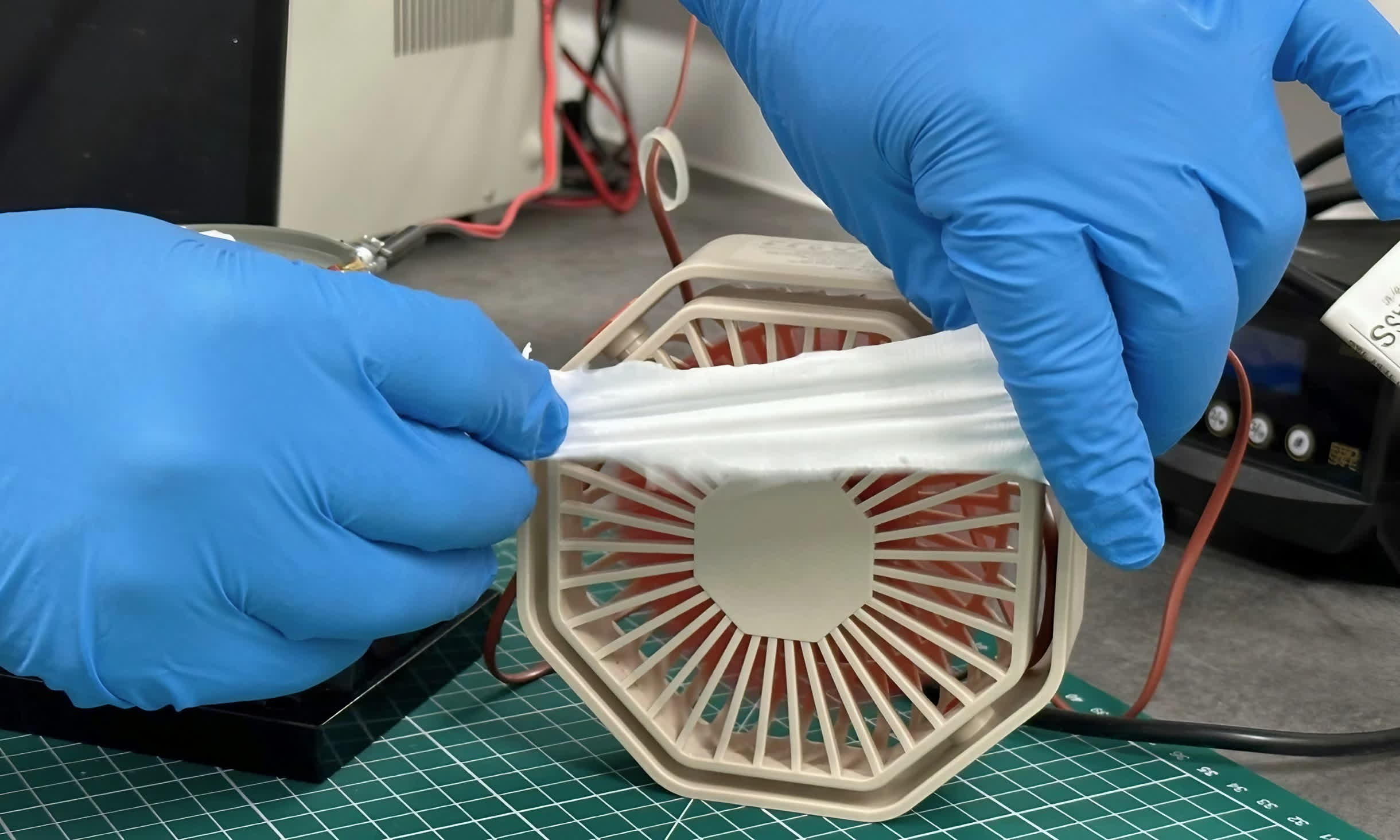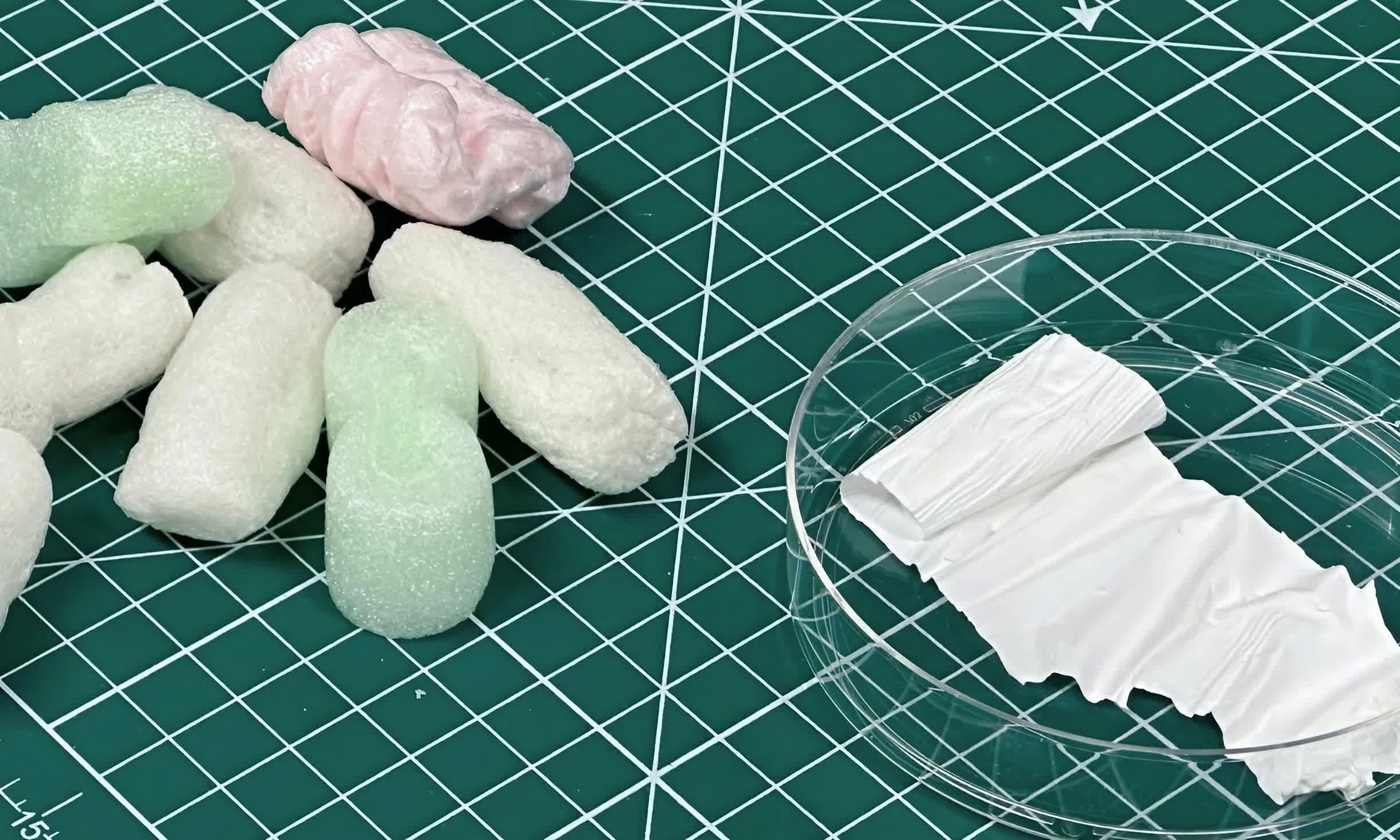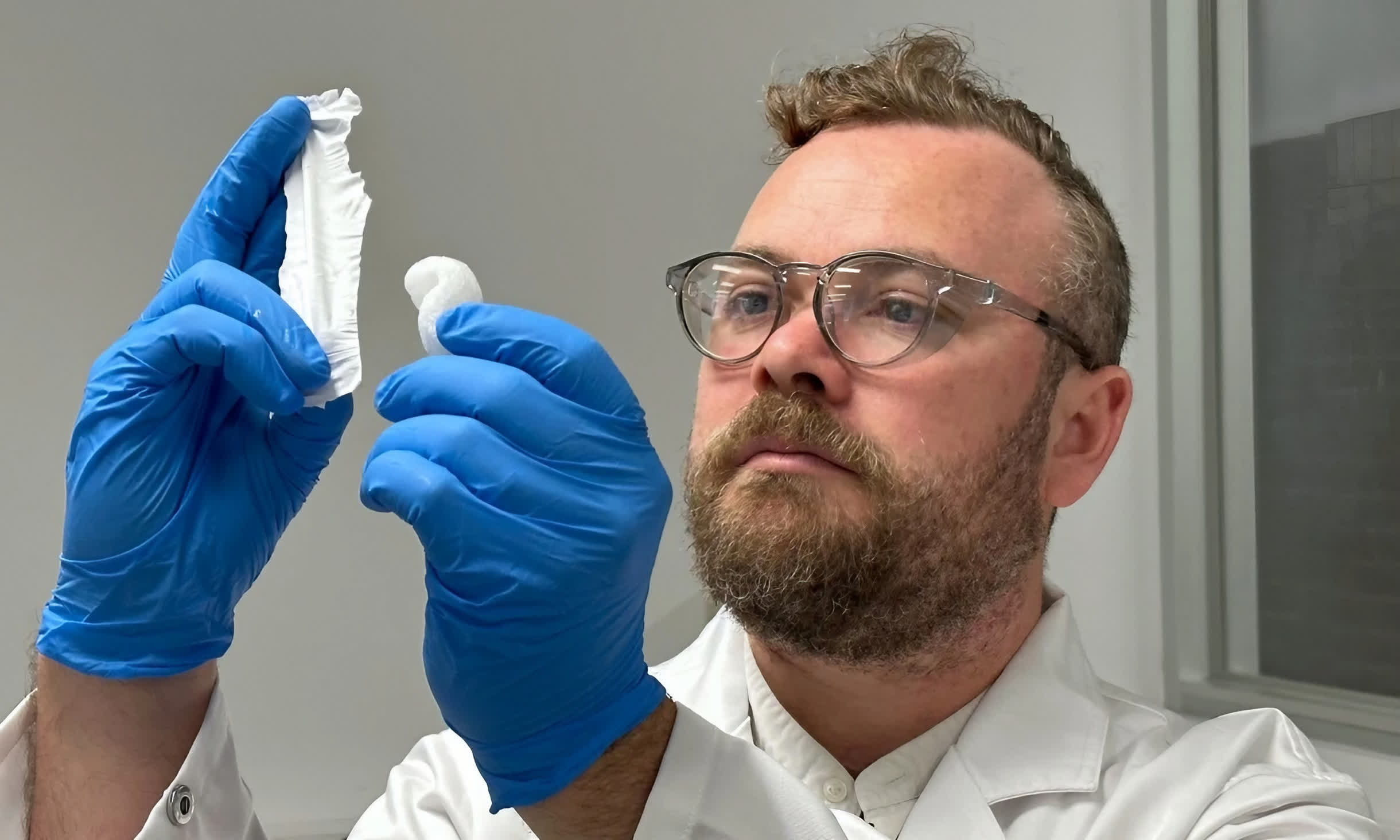Why it matters: Over 25 million tons of single-use polystyrene packaging is manufactured annually on a global basis. However, only a tiny fraction gets recycled, with the vast majority ending up in landfills after serving its purpose. Now, scientists have developed an ingenious way to recycle polystyrene – by converting its static electricity into usable power.
The invention comes from researchers at Australia's RMIT University and was developed in collaboration with Latvia's Riga Technical University. The main innovation is in fabricating patches made from multiple layers of polystyrene, with each layer being around one-tenth the thickness of a human hair. When air flows over these patches, it generates static electricity that can then be harvested and utilized.
Lab testing revealed the patches can produce voltages up to 230V, which is on par with typical household power levels, albeit at lower overall wattage. Faster, more turbulent airflows can also increase that number, while bumping up the number of polystyrene layers could expand the energy harvesting capacity.

Helping the scientists achieve this was the exceptional longevity and durability of polystyrene as a material, which ironically are the same factors that make it so harmful for the environment. They note that while they did explore other disposable plastics for the job, polystyrene came out as the top contender after extensive experimentation.
Essentially, the very properties that make it so persistent and slow to degrade in landfills also ensure these electricity-generating devices can continue operating reliably for extended periods without degradation.
As for usage, the researchers note that integrating these generators into systems like air conditioning units could reduce their energy consumption by an estimated 5%. They also believe that public spaces such as underground walkways could benefit too, making use of incidental air disturbances to produce power and support local power grids.

The research also sheds light on the fundamental science behind static electricity at the nanoscale – a phenomenon we've observed for thousands of years but haven't fully understood at such minute scales.
"We've figured out how to make the insides of reformed polystyrene rub across each other in a controlled way, making all the charge pull in the same direction to produce electricity," lead researcher Dr Peter Sherrell from RMIT said.
Having translated their learnings into a solid invention and even filed a provisional patent application, the RMIT team is now seeking commercial partners to help industrialize and scale up the technology. The full research can be found in the scientific journal Advanced Energy and Sustainability Research.
Image credit: Seamus Daniel, RMIT
